The 10 Biggest News Stories Of 2021
This year’s list of the 10 biggest news stories is topped by major cybersecurity and ransomware attacks, accelerating industry trends such as as-a-service and cloud marketplaces, and new leadership pursuing new strategies at some of the IT industry’s biggest companies.

Turbulent 2021
See the latest entry: The Biggest News Stories of 2022
Last year, the COVID-19 pandemic and its economic disruption – including the impact on the IT industry and IT channel – was far and away the big story of the year.
But 2021 has been anything but a return to business as usual. Repercussions from the ongoing pandemic are still being felt – the continuing chip shortage being a prime example – and after nearly two years many IT industry workers have yet to return full time to their workplaces.
Major trends continue to remake the IT industry and the channel including the shift to as-a-service consumption and the rapid rise of cloud marketplaces as a key component of IT vendor and solution provider go-to-market strategies. And industry consolidation is always at work – this year the IT distribution landscape is particularly being transformed by blockbuster mergers and acquisitions.
Some of the biggest news stories in 2021 involved leadership changes at some of the IT industry’s leading companies, efforts to change the direction (and fortunes) of IT companies – and, in some cases, a combination of the two.
But the rising threat of ransomware and cyberattacks against businesses, government agencies and IT companies, illustrated by a number of major cybersecurity incidents throughout 2021, are clearly this year’s biggest – and still developing – news story.
Here’s our list of the top 10 news stories of 2021. Take a look and see if you agree with our choices.
For more of the biggest startups, products and news stories of 2021, click here.
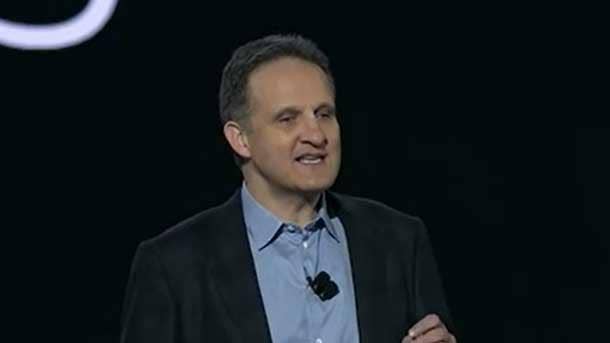
10. Jassy, Selipsky Lead Management Changes At Amazon, AWS
Amazon Web Services has become one of the IT industry’s most powerful companies, serving as the operating platform for a huge number of IT vendors in the cloud computing space, as well as providing its own cloud storage, analytics, database and business application services that often compete with IT vendors.
So it was big news in February when Amazon announced that founder, CEO and nascent astronaut Jeff Bezos would step aside from the day-to-day running of the company and that Andy Jassy, who led AWS since its 2003 inception, would replace him as Amazon president and CEO. (The transition took place on July 5.)
Amazon announced in March that it had hired Tableau Software CEO Adam Selipsky (pictured) to take over as AWS CEO. Selipsky, Tableau’s CEO for about five years, previously worked at AWS as vice president of marketing, sales and support. Selipsky officially started at AWS on May 17 and worked with Jassy until he moved into his new post.
At his first appearance at AWS’s re:Invent conference as AWS CEO, Selipsky said the company’s partner ecosystem – and the company’s continued investment in that ecosystem – will be “an incredibly central part of the AWS strategy” and urged partners to “be experts, be trained, be certified, have lots of good people.”
In November AWS disclosed that channel chief Doug Yeum was leaving the AWS Partner Network for a new management post within the retail division of parent company Amazon. About one week later AWS announced that it had hired Cisco Systems executive Ruba Borno to take over from Yeum as of Dec. 6. At Cisco Borno was most recently senior vice president and general manager of the networking giant’s global customer experience centers.
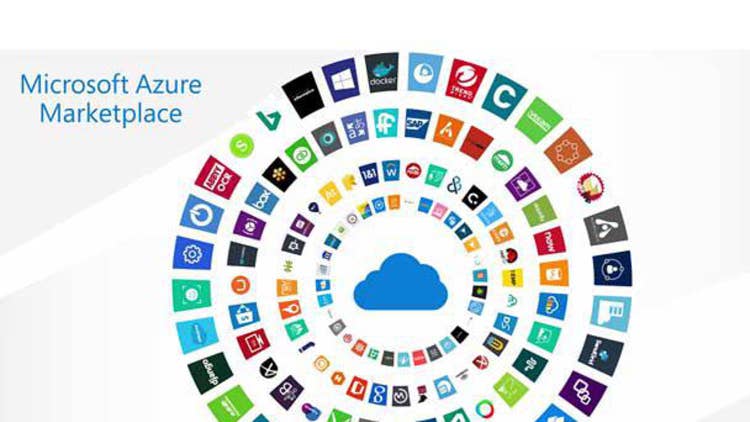
9. Cloud Marketplaces On The Rise
“AWS marketplace is such an important channel for our partners now,” said Doug Yeum, then-AWS worldwide channel and alliances head, speaking during The Channel Company’s Best of Breed Virtual Event Series in January.
While Yeum was obviously speaking about AWS, he might as well have been referring to the entire IT channel. In a trend that’s been building in recent years and accelerated in 2021, cloud marketplaces are becoming the way that IT vendors promote and deliver their software and services.
AWS itself has been a pacesetter here. In December 2020, for example, AWS began allowing partners to quote and bill professional services directly through the AWS marketplace digital catalog of ISV offerings. In January 2021, AWS enabled customers to create multiple Private Marketplace catalogs of approved software. And in May Stephen Orban, the new AWS Marketplace general manager, promised more private marketplace innovation, additional industry-specific solutions, improved governance and international expansion for AWS Marketplace this year.
But Microsoft’s Azure cloud marketplace is having the biggest impact driving sales for partners with 71 percent of solution providers ranking it as the marketplace from where they have most increased their managed or professional services business, according to research from The Channel Company, parent company of CRN, that was presented at the XChange+ 2021 conference in August.
Microsoft was followed by the AWS marketplace at 61 percent, the Google Cloud marketplace at 50 percent, the IBM marketplace at 32 percent and the Oracle marketplace at 27 percent.
Microsoft, meanwhile, drew applause from partners in July when the company announced it was cutting its commercial marketplace fees from 20 percent of transactions to 3 percent.
In March, Hewlett Packard Enterprise launched an initiative to make its GreenLake as-a-service offerings available through distributor cloud marketplaces, striking deals with Ingram Micro, Tech Data, Synnex and Arrow.
Online marketplaces are also becoming the way major distributors move software through the channel to end-customers. TechData’s StreamOne cloud marketplace, bolstered by its Cloud Practice Builder and Click-to-Run Solutions, is gaining momentum while Synnex has bet big on its own Stellr marketplace platform. (The two distributors merged earlier this month.) And Ingram Micro Cloud has become more than the distributor’s vehicle for transacting business: The platform is the core of its partner ecosystem with an API that partners use to connect their eCommerce, CRM, ERP and billing systems.
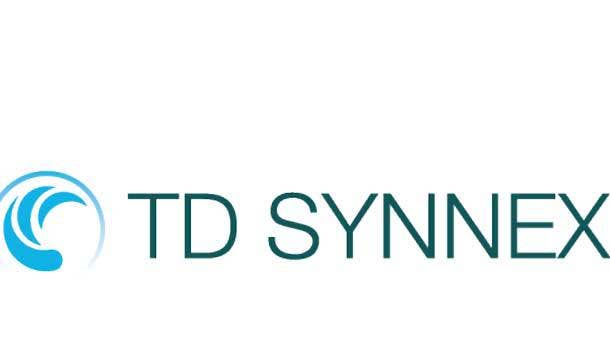
8. Channel Consolidation: The Distribution Landscape Disrupted
In 2020, a number of multi-billion-dollar mergers and acquisitions reshaped the channel landscape – especially amongst the IT industry’s leading distributors.
On Sept. 1, distributors Synnex and Tech Data completed their $7.2 billion merger to become TD Synnex, the industry’s largest IT distributor with annual revenue of nearly $60 billion, 150,000 customers and 22,000 employees. The merger deal, disclosed in March, was approved by Synnex shareholders in June. (That came just one year after Tech Data was itself acquired by private equity firm Apollo Global Management for about $6 billion.)
Tech Data CEO Rich Hume leads the newly combined company as CEO while Synnex President and CEO Dennis Polk is executive chairman of the new company’s board. Hume touted the advantages of the merger and potential benefits for solution providers, including having more resources to invest in developing new services and solutions for channel partners.
In December Sammy Kinlaw, senior vice president of sales communities for North America at TD Synnex, said the Synnex Varnex and Stellr and Tech Data TechSelect partner communities would remain separate entities under an umbrella organization called CommunitySolv.
With the merger TD Synnex surpasses Ingram Micro as the IT industry’s largest distributor. Ingram itself, meanwhile, was acquired on July 7 by private equity powerhouse Platinum Equity for $7.2 billion, ending four years of ownership by HNA Group, a massive Chinese conglomerate. The deal, disclosed in December 2020, came a little more than five years after the Chinese company bought the distributor for about $6 billion.
In October Kirk Robinson, Ingram Micro’s chief country executive for the U.S., speaking at The Channel Company’s Best of Breed Conference, said the distributor was making investments to help solution providers grow. Those include planned expansions in the public sector market, and investments in advanced solutions (security, data center, IoT and professional services), cloud services and the consumer business. (That same day Ingram Micro disclosed the acquisition of cloud data center consulting company CloudLogic.)
In December Ingram Micro announced a $3 billion deal to sell a large piece of its Commerce & Lifecycle Services business to France-based CMA CGM Group. The sale raises capital that Ingram Micro can devote to expanding its core technology distribution and Ingram Micro Cloud and Cloud Blue businesses.
The big changes among the major distributors were only part of a wave of consolidation sweeping through the channel in 2021. Most notable was CDW’s $2.5 billion acquisition of Sirius Computer Solutions, announced in October and completed on December 3, that creates a $20 billion solution provider with 13,000 employees.
In September systems integration giant Accenture, which has been on an acquisition binge in recent years, said it made $4.2 billion in acquisitions in the company’s fiscal 2021 (ended Aug. 31). Also active on the acquisition front were Computer Design & Integration, which acquired fellow solution providers High Availability in January and Candoris in August; Converge Technology Solutions, which bought Dasher Technologies – Converge’s 19th acquisition in just three years; and NWN, which acquired Carousel Industries in May, bringing together two Cisco Gold partners to create a $1 billion cloud communications powerhouse.

7. IBM Spins Off Kyndryl As CEO Krishna Accelerates Big Blue’s Transformation
On Nov. 4, after months of planning and preparation, IBM spun off its Global Technology Services business unit as Kyndryl, a managed infrastructure services company with more than $18 billion in annual revenue and what the company sees as a $510 billion addressable market.
Kyndryl faces the challenge of turning around the company’s fortunes: In September the soon-to-be independent Kyndryl disclosed that it recorded three consecutive years of declining revenue and a $2.01 billion loss in 2020. But executives have emphasized Kyndryl’s opportunities as a separate company and by year’s end Kyndryl had established alliances with Google Cloud and Microsoft and expanded a partnership with VMware.
The GTS spinoff is the most visible move by Arvind Krishna who took over as IBM CEO in April 2020 and outlined his vision for transforming the company into a leading provider of hybrid cloud and artificial intelligence technologies and services.
In 2021 the plans to make that vision a reality have continued to take shape and even accelerated. Most notable have been some of the biggest changes in IBM’s go-to-market model in three decades including the launch of a new, simplified sales structure with a renewed emphasis on partners. That includes investing $1 billion to rapidly expand IBM’s cloud partner ecosystem.
Krishna also engineered a series of acquisitions in late 2020 and this year to speed IBM’s transformation including buying AIOps vendor Turbonomic, DevOps consultant BoxBoat Technologies, hybrid cloud consultants Taos, Bluetab Solutions Group and SXiQ.
The transformation hasn’t always been smooth for IBM this year. July saw the unexpected departure of IBM President Jim Whitehurst, widely seen as key to integrating Red Hat with the rest of IBM. And in October Krishna said the pending Kyndryl spinoff caused some customers to “pause” spending with IBM, contributing to third-quarter results that missed expectations.
But Krishna is staying the course. In October, speaking at The Channel Company’s Best of Breed Conference, the CEO doubled down on IBM’s ambitious growth plans in such areas as security and hybrid cloud and emphasized the importance of the channel in meeting those goals.

6. Intel Staging A Comeback With Gelsinger At The Helm
Intel is one of the IT industry’s foundational companies and long seen as one of its most innovative. But the giant chipmaker has lost its competitive edge in recent years, including stumbling with its 10-nanometer and 7-nanometer manufacturing processes – just as a resurgent AMD has hit its stride.
One of the IT industry’s biggest news stories this year has been Intel’s hiring of VMware CEO and 30-year Intel veteran Pat Gelsinger as the chipmaker’s CEO and Intel’s efforts to regain its momentum. Since starting in the job Feb. 15, Gelsinger has unveiled plans and unleashed a wave of changes with the goal of returning Intel to “unquestioned leadership” in the semiconductor industry.
Topping the list of initiatives is Intel’s game-changing IDM 2.0 strategy that’s intended to expand the company’s manufacturing capacity and dramatically change the way it makes processors. The plan includes building new manufacturing fabrication plants (including investing $20 billion in two new fabs in Arizona and $3.5 billion to upgrade a New Mexico site), expanding the use of external foundries like TSMC, and launching Intel’s own foundry service business to manufacture chips designed by other companies.
Mid-year Intel instituted a major restructuring, merging its manufacturing and operations group and global supply chain group into a new organization called Manufacturing, Supply Chain and Operations in a move instrumental to the IDM 2.0 plan. Intel also split the Data Platform Group into a Data Center and AI Group and a Network and Edge Group, and created new Corporate Planning, Software and Advanced Technology, and Accelerated Computing Systems and Graphics business units.
There have been major personnel changes as well. In November, Intel confirmed that it hired top data center GPU executive Ogi Brkic from AMD to lead the product side of the chipmaker’s new high-performance computing group. Veteran Intel engineer Sunil Shenoy, who left the company in 2014, returned as senior vice president and general manager of the Design Engineering organization. And Gelsinger rehired 28-year Intel veteran Shlomit Weiss, one of the key engineers behind the company’s dual-core and SkyLake CPUs. Navin Shenoy, Intel’s top data center executive, left the company in July as part the restructuring.
Intel is showing signs of regaining its innovative mojo. In August the company unveiled details of its Alder Lake hybrid CPU architecture, which combines two x86 microarchitectures to maximize performance and efficiency for desktop and laptop PCs. Also in August Intel vowed to take on AMD and Nvidia in the high-performance graphics arena with a new brand called Intel Arc. And In October Intel debuted its 12th-generation Core CPUs based on Alder Lake.
But Intel can’t take its foot off the gas as AMD keeps up the pressure. In October AMD launched new EPYC CPUs and Instinct GPUs that it said out-perform competing Intel and Nvidia products. And AMD previewed next-generation “Genoa” EPYC server CPUs with up to 96 cores set to debut in 2022 and up to 128 cores in 2023. In its third quarter AMD reported record revenue, fueled by significant growth for commercial laptop chips and a more than doubling of its data center business.
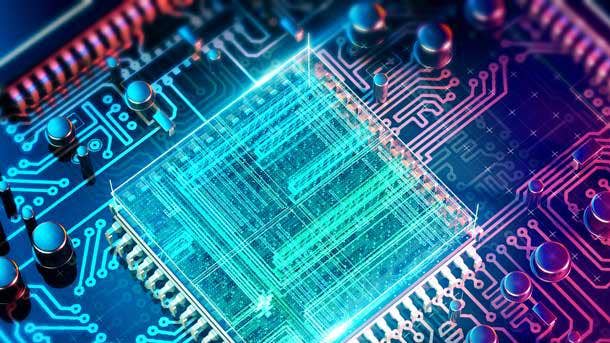
5. The Global Chip Shortage Wreaks Havoc On Multiple Industries
IBM CEO Arvind Krishna believes that predictions of a resolution to the industry-wide semiconductor shortage by the end of 2022 are overly optimistic, saying at The Channel Company’s Best of Breed Conference in October that he thinks it’s “more likely” that chip production and supply chain problems won’t be fully solved until 2023 or even 2024.
Earlier at the same conference Daniel Newman, founding partner and principal analyst Futurum Research, was a bit more optimistic when he said semiconductor supply should catch up with demand in late 2022.
Either way it’s clear that the global chip shortage that began in 2020 and had a major impact on a wide range of industries and companies this year isn’t ending any time soon.
Why the shortage? Some chip manufacturing facilities shut down as the COVID-19 pandemic took hold. Former President Trump’s trade war with China barred companies from making chips there. And with microprocessors being built into so many products, from consumer electronics and appliances to automobiles and IT systems, demand has soared even as semiconductor companies compete for capacity at contract manufacturers like Taiwan’s TSMC.
The shortage has particularly hit IT system and device makers and the channel partners who sell their products. In October Apple CEO Tim Cook stunned industry analysts when he said the company took a $6 billion revenue hit in its fiscal 2021 fourth quarter – with the chip shortage largely to blame – and said the impact on the fiscal 2022 first quarter could be even greater.
Intel in October said that to cope with the semiconductor shortage the company was discontinuing more than 30 Ethernet controller and adaptor products for servers, citing the need to allocate available chip supplies to Ethernet products that sell in higher volumes.
Intel CEO Pat Gelsinger in July warned that chip supply shortages would continue for at least several more quarters and that it might be one to two years before the industry could completely catch up with demand. Intel also said it would not pass along to partners and customers some of the increased costs the company was seeing in its supply chain.
All this has impacted the channel, at times making it difficult for solution providers to get the products they need to meet customer demand. In May server and storage system manufacturer Supermicro resorted to asking channel partners for extended forecasts on product orders to help the company navigate the semiconductor shortage.
The shortage also caught the attention of Washington D.C. decision makers. In June the U.S. Senate approved $52 billion in spending for domestic semiconductor manufacturing and research. That followed an executive order from U.S. President Joe Biden in February to review semiconductor industry supply chains and IT technologies.
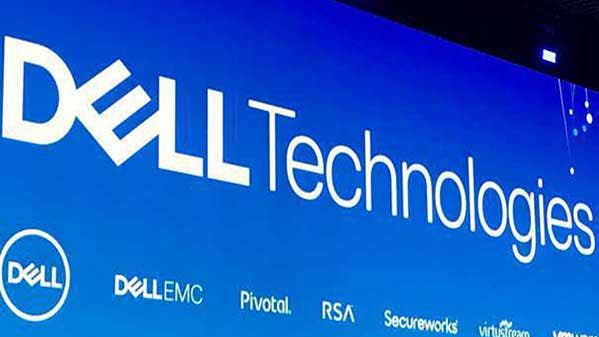
4. Dell Direct Sales In Conflict With Channel Partners
Dell Technologies partners told CRN in December that conflict between the company’s 27,000-strong direct salesforce and its channel partner community has moved beyond PCs into lucrative storage, server and hyperconverged infrastructure deals.
In September, CRN reported that the strategic shift to direct sales was being driven by North America President John Byrne, who has reportedly told Dell partner reps that taking client business direct is a “top priority.” The reported change comes after Dell – which once operated on a direct-sales model – has spent 14 years wooing the channel.
Dell also has cut the number of partner account managers in North America, reducing the ranks of veteran channel managers and slashing the on-target earnings for rep positions by as much as 30 percent. Executives at multiple solution providers, all Platinum level or higher, told CRN that Dell has replaced highly respected, veteran partner managers with less-experienced PAMs who are being compensated at lower pay levels.
Solution provider executives told CRN that they now see Dell as a competitor for PC sales and are exploring their options for working with other PC manufacturers. “This is going to create turmoil and a lot of conflict for Dell,” the CEO of a large national solution provider told CRN. “I think the ends will not justify the means, and more business will move to other OEMs like HP and Lenovo.”
Dell Technologies President of Global Sales Bill Scannell told CRN there has been no change in the company’s channel strategy and that conflicts between partners and its direct sales team are few and far between.
All this comes as Dell partners adapt to changes brought about by Dell’s Nov. 1 spin-off of virtualization technology developer VMware, in which Dell had owned an 81 percent stake, as an independent company.

3. Software Vulnerabilities Trigger Cybersecurity Alarms
As 2021 drew to a close, the IT industry was roiled by the discovery of critical vulnerabilities in the Java logging utility Apache Log4j, a cybersecurity threat that one IT executive described as a “Fukushima Moment” – a reference to the 2011 meltdown of the Japanese nuclear plant – and predicted that businesses around the world will spend years dealing with the repercussions.
The Log4j news wrapped up 2021, a turbulent year of cybersecurity vulnerabilities, threats and attacks, which began with the rapidly escalating damage caused by what became known as the SolarWinds attack.
Solution providers, managed service providers and the developers of tools used by MSPs sometimes found themselves in the middle of cybersecurity incidents, especially ransomware attacks. Among the biggest was the mid-year ransomware attack against Kaseya by the REvil gang that exploited a vulnerability in Kaseya’s VSA remote monitoring and management tool, putting dozens of MSPs and hundreds of their customers in jeopardy.
The year’s cybersecurity news was bookended by the SolarWinds and Log4j incidents.
The very extensive and very sophisticated SolarWinds cyberattack, first discovered by cybersecurity company FireEye in late 2020, is believed to have been the work of the Russian intelligence service APT29. Exploiting a vulnerability in SolarWinds’ widely used Orion network monitoring software.
Over the next few weeks investigators would discover that the attackers’ long list of targets included government agencies – including the Department of Defense, the Department of Homeland Security, the Department of State and the Department of Justice – as well as some 100 private sector companies including Microsoft and other leading IT vendors. A number of cybersecurity vendors disclosed that sophisticated hackers had attacked their internal systems, attempting to compromise their certificates or access their email – with many of the attacks linked to the SolarWinds attack. A Mimecast breach in January was also linked to the SolarWinds incident.
The repercussions of the Log4j vulnerability were still unfolding as 2021 came to an end. The software is used by many companies and organizations, from Apache and Apple to Minecraft and Twitter, giving threat actors an enormous attack surface to cause widespread global disruption. Using the remote code execution exploit vulnerability hackers can launch attacks with a single line of text.
By Dec. 15 Microsoft and other IT vendors began reporting evidence that the vulnerability was being leveraged by a variety of government-backed threat actors (from China, Iran and North Korea, among others) and ransomware groups. Companies reported to be taking steps to protect themselves from the Log4j vulnerability included Amazon Web Services, Cisco Systems, ConnectWise, IBM and VMware. Cybersecurity companies said to be taking action included Fortinet, Rapid7, RSA, SonicWall and Sophos.
Ransomware attacks have been increasing over the last several years with attacks against IT systems operated by hospitals and county and local governments. That has continued into 2021: IDC reported in August that in the previous 12 months more than one-third of all organizations globally had faced some kind of ransomware incident.
Perhaps the most visible incident came in May when a ransomware attack against Colonial Pipeline resulted in gas shortages in the Southeast.
Perhaps because of its widely used software products, Microsoft often found itself entangled in cybersecurity incidents. In August the company scrambled to release updates to Windows Print Spooler to fix vulnerabilities dubbed “PrintNightmare.” In September the hackers behind the SolarWinds attack stole data from Microsoft Active Directory Federation Services servers. And in November Iranian hackers were reported to be exploiting vulnerabilities in Microsoft Exchange ProxyShell and in Fortinet software to gain access to IT systems in advance of possible ransomware attacks.

2. The Continued Shift To As-A-Service
The move by IT vendors to offer their products on an as-a-service basis has been gaining momentum in recent years. But with major announcements from Dell Technologies, Cisco Systems and Hewlett Packard Enterprise, the practice has really taken off.
Most notable was Dell’s announcement of the general availability of its Apex portfolio of as-a-service offerings, including Apex Data Storage Services, Apex Cloud Services and Apex Custom Solutions. Dell says Apex offers rapid hybrid-cloud deployment – in as little as 14 days – and lower costs.
Seen as a way to compete with cloud giants like Amazon Web Services, as well as traditional rivals like Hewlett Packard Enterprise with their own as-a-service offerings, Dell plans to eventually sell all of its products using a consumption-based, as-a-service model. (In June Dell President Bill Scannell told CRN that Dell Apex could be as much as “50 percent less expensive” than AWS and other public cloud services.
Cisco executives, meanwhile, have promised to deliver the majority of the company’s portfolio “as a service.” This year, at the Cisco Live event in April, the company made good on that vow with the debut of Cisco Plus, a way for customers to purchase – and partners to sell – Cisco products in a flexible, consumption-based manner. The first as-a-service offerings covered networking and hybrid cloud.
HPE, which has pioneered the as-a-service space with its GreenLake portfolio, continued to build on its lead with innovative additions such as the GreenLake Lighthouse platform that provides multiple cloud services on demand, Project Aurora zero trust security, and a new data storage service subscription model.
In August CEO Antonio Neri said HPE was implementing a new services development model and development team to accelerate GreenLake cloud platform-as-a-service delivery efforts. The company also debuted a new “front-end experience” with GreenLake.HPE.com where customers can procure HPE cloud services.
In September HPE acquired Zerto, a cloud data management and storage protection service provider, for $374 million in a move that will expand GreenLake’s storage-as-a-service offerings.

1. MSPs, Other Solution Providers In The Cyberattack Crosshairs
In late October, Microsoft warned that the Russian foreign intelligence service responsible for the massive SolarWinds hack, which came to light at the close of 2020, had targeted more than 140 IT resellers and managed service providers since May and had compromised as many as 14 in a new surveillance effort. The Russian agency looked to exploit any direct access that solution providers have to their customers’ IT systems.
The warning was just the latest in a growing wave of cybersecurity and ransomware attacks this year that have targeted MSPs and solution providers – and what has been the biggest news story of 2021 for the channel.
Speaking at The Channel Company’s NextGen+ 2021 conference in October Danny Jenkins, co-founder and CEO of cybersecurity company ThreatLocker, said hackers have figured out that MSPs can be easier targets than major banks and government agencies. “Attackers can use existing tools against you – and they are – to get into your systems,” he said.
Perhaps the most damaging ransomware attack against the channel came mid-year when on July 2 IT service management vendor Kaseya took all SaaS instances of its VSA remote monitoring and management tool offline, citing a “potential attack” against VSA customers. The company also posted a notice on its website recommending that customers immediately shut down their VSA servers.
That was the beginning of what would prove to be one of the biggest ransomware attacks in years. The REvil gang, exploiting a vulnerability in the on-premises VSA software, compromised some 50 MSPs and encrypted end-customers’ data. The attackers demanded ransom payments from more than 1,000 victims, $50,000 from smaller companies and $5 million from larger ones – $70 million in total.
Kaseya VSA remained offline for about 10 days, causing disruption for MSPs and their clients and eliciting an apology from CEO Fred Voccola. The company issued a patch and restarted its servers on July 12. But the blowback continued with reports that the company had warnings about the VSA vulnerability and reports that Kaseya employees had warned management of the potential danger.
In November the U.S. Department of Justice announced that it had arrested two individuals, including a Ukraine citizen, charging them in connection with the Kaseya attack. DOJ officials described Kaseya’s response to the attack as “swift,” although a report said the FBI delayed helping victims of the attack to unlock their systems for nearly three weeks because sharing the decryption key would have tipped off the hackers.
A ransomware attack against Accenture showed how even the biggest systems integrators were vulnerable to what one solution provider executive called a “cyber-pandemic.”
Accenture was hit by hackers using the LockBit ransomware and threatened to release company data and sell insider information. Accenture confirmed the attack on Aug. 11, although it reportedly spotted the attack as early as July 30. Accenture said the incident had no impact on the company, maintaining it had successfully identified and contained the attack and isolated the affected servers.
The attackers reportedly demanded a $50 million ransom and in a Dark Web posting, ominously said: “If you’re interested in buying some databases, reach us.” The hackers also reportedly went after Accenture customers using credentials accessed during the cyberattack.
Solution providers were critical of Accenture’s lack of public disclosure about the ransomware attack, saying it was a missed opportunity to help the industry become better informed about the ransomware threat. Ironically, Accenture issued a cybersecurity report that warned about the threat of ransomware – just as the attack against the company was happening – without mentioning the attack against itself.
MSPs have tried to battle back against the threats. MSP executives on a panel at The Channel Company’s NextGen+ 2021 conference in October said they were pushing to increase their internal security standards and practices as cyberattacks targeting service providers continue to proliferate. And the companies that develop tools used by MSPs are expanding their software’s cybersecurity capabilities: In 2022, Cohesity will launch two new security offerings to help clients battle ransomware.